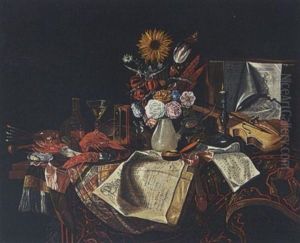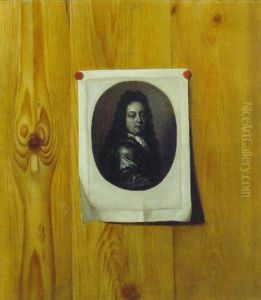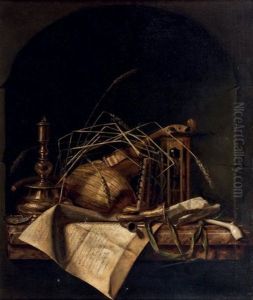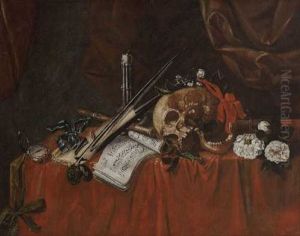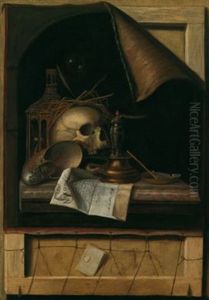Cornelis Norbertus Gysbrechts Paintings
Cornelis Norbertus Gysbrechts was a Flemish painter who specialized in still life and trompe-l'œil, a painting technique designed to trick the eye into perceiving painted detail as a three-dimensional object. Gysbrechts' exact birthplace is unknown, but it is believed to be in Antwerp, Belgium, around the year 1630. His works are particularly noted for their intricate detail, clever use of perspective, and the playful nature in which they engage with the viewer.
Gysbrechts' career is mostly documented from the mid-1650s onwards, when he became active in the art scene. By 1659, he was working in Copenhagen at the court of King Frederick III of Denmark, suggesting that his reputation as an artist of notable skill had reached beyond the borders of his native Flanders. His tenure at the Danish court lasted until approximately 1670, during which time he produced a significant body of work that included not only trompe-l'œil paintings but also vanitas paintings, a genre that reflects on the transience of life and the futility of pleasure.
Despite his success and the favor he found at the Danish court, little is known about Gysbrechts' life after the 1670s. The last known records of his work date to around 1675. There is no definitive record of his death, which has led to speculation among art historians. His legacy, however, is well-established, with his paintings held in high regard for their technical prowess and their philosophical depth. Gysbrechts' work is seen as a significant contribution to the Northern European still life genre, particularly in the development of trompe-l'œil. His paintings continue to be studied and admired for their beauty and ingenuity, ensuring his place in the annals of art history.



